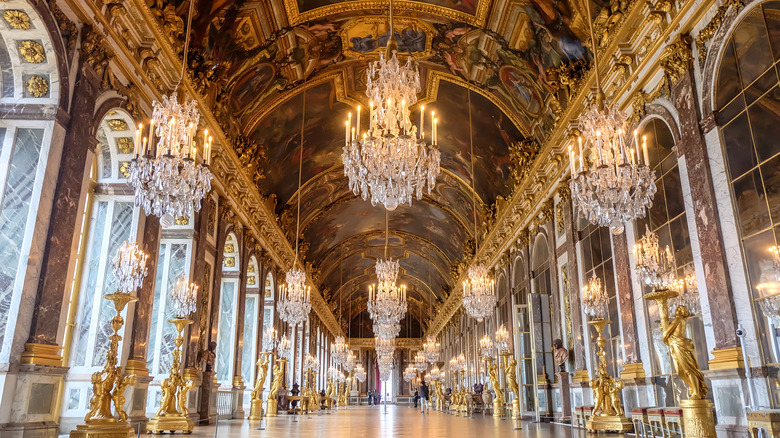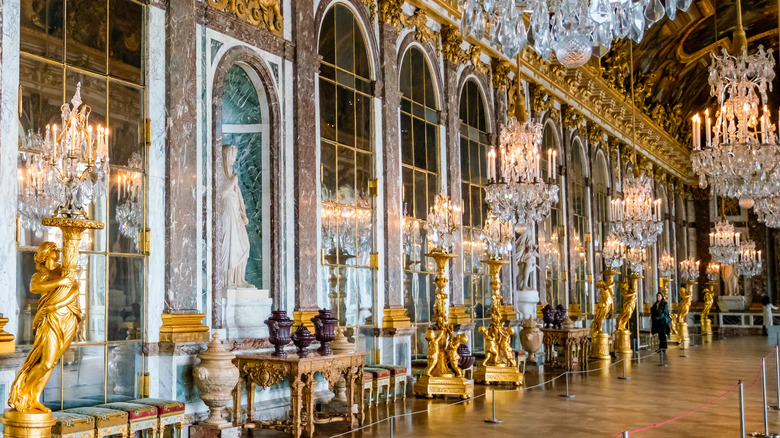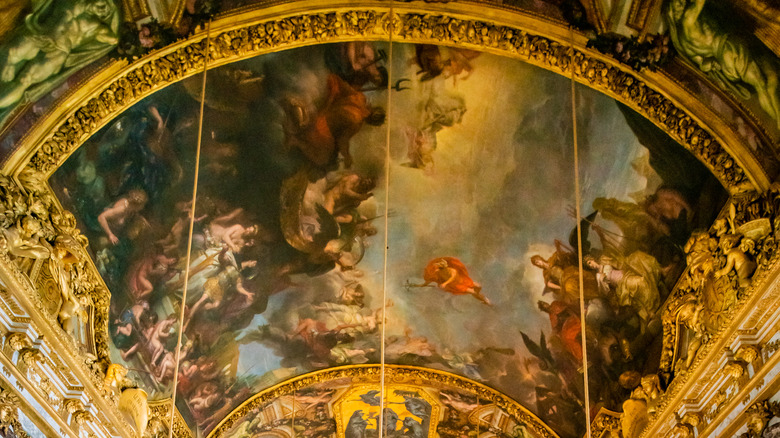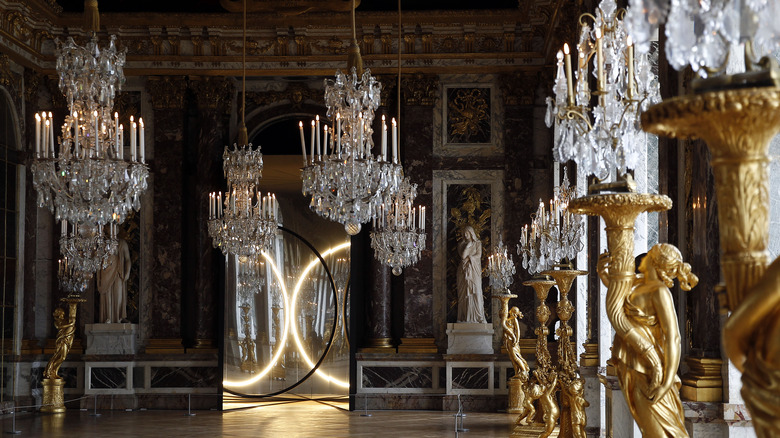What You Should Know About The Palace Of Versailles' Hall Of Mirrors
France's Palace of Versailles features 700 rooms, but the Hall of Mirrors is the most famous and the most extravagant of them all.
According to the palace's official website, architect Jules Hardouin-Mansart designed the gallery to replace an impractical open terrace. The transformation began in 1678 and was completed six years later.
The Hall of Mirrors became a hub of activity at Versailles. It served as an everyday reception area where visitors and courtiers would pass through or meet one another. On less frequent and more formal occasions, the hall was used for balls and even royal weddings. Most notably of all, the Treaty of Versailles — which brought World War I to an end — was signed in the Hall of Mirrors on June 28, 1919.
Today, French political leaders often welcome esteemed guests to the hall, showing off the most lavish room in the generally very magnificent palace. The Hall of Mirrors has seen centuries of rulers, political leaders, and history in the making, and the room itself has a remarkable history of its own.
The Hall of Mirrors is one of the most expensive rooms in history
The Palace of Versailles' Hall of Mirrors showcases the height of French architecture and opulence. The hall's most luxurious features represent the country's "political, economic, and artistic success," according to the Château Versailles website.
The hall spans 73 meters (220 feet) and houses 357 mirrors and 17 arches. It also contains "marble walls, chandeliers, and ceiling paintings" as well as "8,460 square feet of parquet flooring," per The New York Times.
Prior to the hall's construction, makers in Venice, Italy, had held a monopoly on mirror manufacturing, per Château Versailles. The Hall of Mirrors marked a gloating defiance of the Venetian monopoly and a proud display of France's ability to not only manufacture but also to afford hundreds of mirrors, which were a real luxury at the time.
The hall also showed off a new "French style" with a design by Charles Le Brun, which involved French emblems such as a bronze fleur-de-lis and a pair of roosters.
The paintings in Versailles' Hall of Mirrors tell a triumphant story
The Hall of Mirrors' vaulted ceiling features 30 allegorical paintings by artist Charles Le Brun. Arranged in a sequence, the paintings illustrate the peace treaties, reforms, and other victories achieved by Louis XIV during his first 18 years as king, per Château Versailles.
The New York Times describes the paintings as forming "a narrative, moving from war to peace," paying tribute to the king's time in the military during the Dutch Wars of the 1660s and 1670s. "The King Governs for Himself," which depicts the king taking the throne in 1661, takes center stage. Each painting is accompanied by a date of the event it depicts and a description written by French playwright Racine or French poet Nicolas Boileau.
"They were all designed by Le Brun using hundreds of drawings," Véronique Sorano, a member of the Versailles restoration team, told the newspaper in 2007. "They were then painted on canvas and attached to the vault. Le Brun worked with a team, but we have no knowledge of whether he painted any himself."
The Hall of Mirrors underwent a restoration that was completed in 2007
In 2007, an expert restoration team completed a $16 million makeover on Versailles' Hall of Mirrors. According to The New York Times, the restoration was financed by a French construction company and was "the single largest example of corporate cultural sponsorship in France to date." The project marked the first time in more than 300 years that the hall had been fully cleaned and revamped.
Of course, the most important component of the project was maintaining the hall's 357 mirrors. Vincent Guerre led the charge, but only replaced 48 of the mirrors, leaving the rest intact. "Some mirrors were replaced in the early 19th century, but 60 percent of these mirrors were there under Louis XIV," he told The New York Times.
Signs of wear in the mirrors included, per The Times, "a smoky appearance and occasional distortions," and two had names —"René" and "Emma 1842" — carved into them. "They are old mirrors, so we had to choose between replacing them and preserving the past," Guerre said. "We kept them, hoping they don't give ideas to anyone else."
Véronique Sorano worked to restore the hall's Le Brun paintings. "With some paintings we had to do extensive retouching, but others were in a good condition," she told The Times. "The idea was to preserve the works' present state of aging."
Chief architect Frédéric Didier described the Hall of Mirrors to The Times as "a dazzling old lady. All the wrinkles in her face tell a story."



